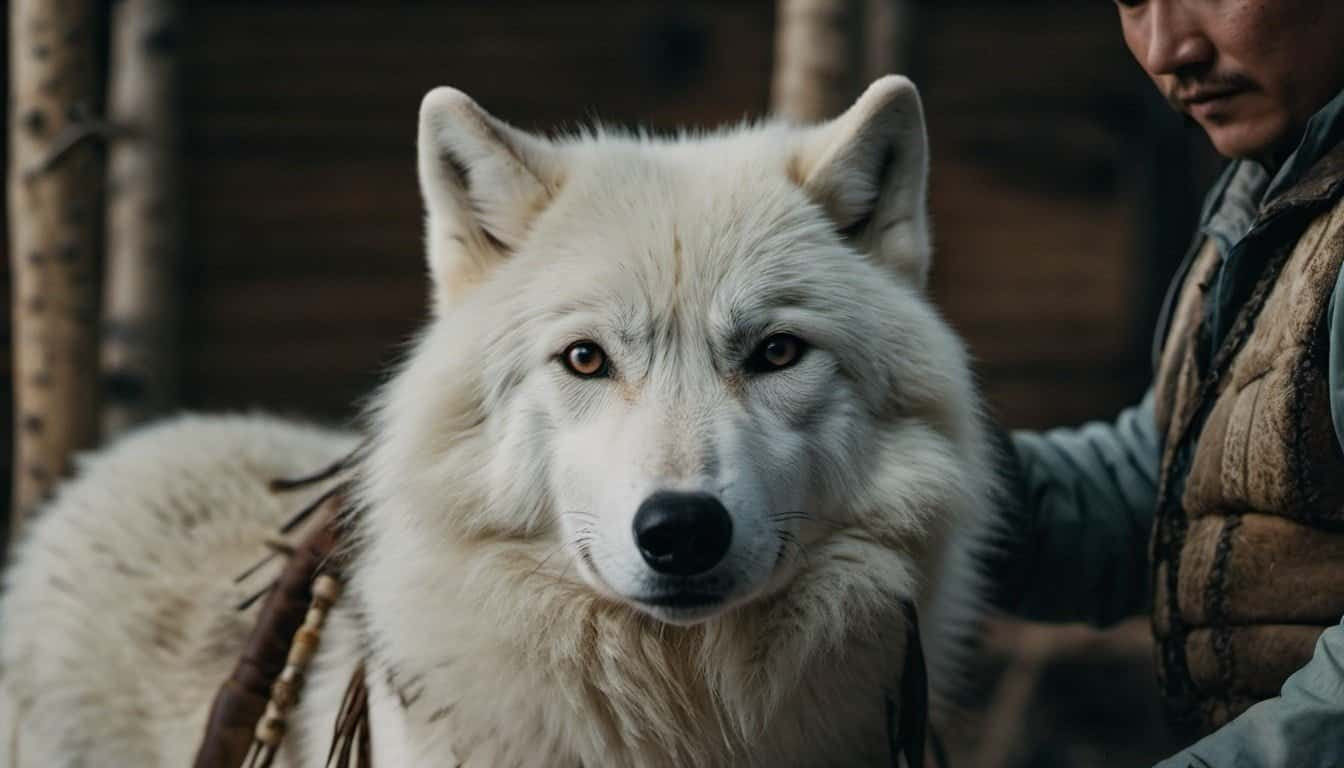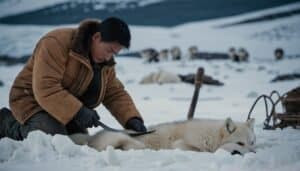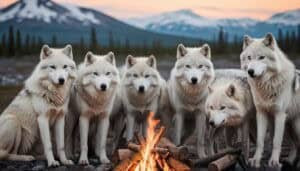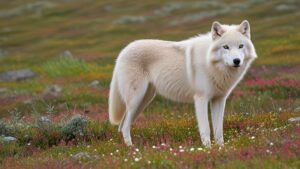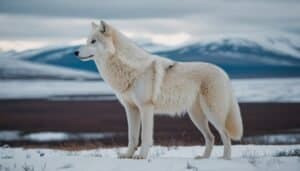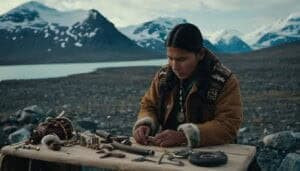Introduction
Arctic wolf-skin crafting is a rich tradition among indigenous Arctic communities, reflecting both practicality and cultural heritage
This article delves into the traditional tools and skills required for wolf-skin crafting, the meticulous process of preparing and tanning the skins, and the various clothing items created from this unique material
Additionally, it explores the cultural significance of these crafts and how modern influences have integrated with age-old techniques. Join us in uncovering the detailed artistry and heritage behind Arctic wolf-skin crafting
Traditional Tools and Skills in Arctic Wolf-Skin Crafting
Arctic wolf-skin crafting is an intricate process that has been perfected over generations by indigenous Arctic communities. These skills and tools are not only practical but also carry cultural significance
Traditional Tools and Their Uses
Traditional tools used in Arctic wolf-skin crafting are specific and specialized, reflecting the precision required for this art
Some of the essential tools include:
Ulu (Woman’s Knife): This versatile knife, with a curved blade, is primarily used by Inuit women. It is essential for skinning, cutting, and preparing the wolf-skin. The design allows for efficient slicing through tough hides and fine detail work
Scrapers: Made from bone, antler, or metal, these tools are used to remove fat and flesh from the hide. Different scrapers are employed for various stages, ensuring the skin is thoroughly cleaned without damaging it
Awls and Needles: Awls, often crafted from bone, are used to punch holes in the tough skin, making it easier to sew. Needles, traditionally made from bone or ivory, are now often metal, and are used to stitch the skins together with sinew or thread
These tools are not only functional but are also often decorated, reflecting the artistry and cultural importance of the craft
Craftsmanship Skills Required
The skills required for Arctic wolf-skin crafting are passed down through generations, with each artisan learning from their predecessors
Key skills include:
Skinning: This involves removing the skin from the wolf without damaging it. Precision and experience are crucial, as any mistake can ruin the hide
Cleaning and Scraping: After skinning, the hide must be cleaned of all fat and flesh. This step requires meticulous attention to detail to ensure the skin is ready for tanning
Sewing: Once prepared, the skins are sewn together to create clothing or other items. This involves a high level of skill to ensure the seams are strong and the final product is durable
Crafting with wolf-skin is a labor-intensive process, often taking weeks to complete a single item. The artisans’ expertise ensures that each piece is not only functional but also a work of art
Integration of Modern Tools
While traditional tools and methods are still prevalent, modern influences have introduced new tools and materials into the crafting process
These include:
Metal Scrapers and Knives: While traditional scrapers and ulus are still used, modern metal tools have also been adopted for their durability and efficiency
Synthetic Threads: In some cases, synthetic threads have replaced sinew for sewing, providing greater strength and flexibility
Electric Tools: Some artisans use electric sewing machines for parts of the crafting process, although much of the work is still done by hand to maintain traditional techniques and quality
The integration of modern tools has allowed for greater efficiency and has opened up new possibilities for design and craftsmanship. However, many artisans still prefer traditional methods, valuing the connection to their cultural heritage and the authenticity of the finished products
Preparing and Tanning Wolf-Skin
The preparation and tanning of wolf-skin are crucial steps in the crafting process, ensuring the durability and quality of the final products. These processes are steeped in tradition and require significant expertise
Skinning and Cleaning Techniques
The first step in preparing wolf-skin is skinning the animal. This involves:
Careful Removal of the Skin: Using an ulu or a similar knife, the skin is carefully removed from the carcass. The goal is to obtain the skin intact without tears or holes, which requires precision and experience
Initial Cleaning: Once the skin is removed, it undergoes an initial cleaning to remove blood, fat, and flesh. This step is often done using scrapers and involves a delicate balance of force and finesse to avoid damaging the skin
The cleaned skin is then ready for the next stage, which involves more detailed cleaning and preparation
Traditional Tanning Methods
Tanning is the process of treating the skin to preserve it and make it suitable for crafting
Traditional Arctic tanning methods include:
Soaking and Softening: The cleaned skin is soaked in a solution, often made from natural ingredients such as urine, which acts as a softening agent. This process can take several days, during which the skin is frequently checked and agitated to ensure even softening
Scraping and Stretching: After soaking, the skin is stretched on a frame and scraped again to remove any remaining fat and flesh. This step also helps to further soften the skin and make it more pliable
Smoking: The final step in traditional tanning is smoking the skin over a low fire. This process not only helps to preserve the skin but also imparts a distinctive color and scent. The smoke acts as a natural preservative, protecting the skin from insects and decay
These traditional methods are labor-intensive and time-consuming but result in a high-quality, durable material that is ideal for crafting clothing and other items
Changes in Crafting Methods
Modern influences have introduced some changes to the traditional methods of preparing and tanning wolf-skin:
Chemical Tanning: Some artisans have adopted chemical tanning methods, which can significantly speed up the process. Chemical tanning uses commercial tanning solutions that achieve similar results in a fraction of the time
Mechanical Softeners: Modern mechanical devices can be used to soften skins more efficiently than traditional methods. These devices can save time and reduce the physical labor involved in the process
Hybrid Techniques: Many artisans combine traditional and modern methods to achieve the best results. For example, a skin might be initially prepared using traditional techniques and then finished using modern tools and materials
Despite these changes, many artisans continue to value traditional methods for their cultural significance and the unique qualities they impart to the finished product
Arctic Wolf-Skin Clothing and Cultural Significance
The clothing crafted from Arctic wolf-skin is not only functional, protecting against the harsh Arctic climate, but also holds deep cultural significance for indigenous communities. This section explores the types of clothing made, the decorative elements used, and the cultural importance of these items
Traditional Arctic Clothing Items
Arctic wolf-skin is used to create a variety of traditional clothing items, each designed to provide maximum warmth and protection:
Parkas: These are long coats with hoods, often lined with fur for added warmth. Wolf-skin parkas are especially valued for their ability to repel moisture and insulate against extreme cold
Boots (Mukluks): Mukluks made from wolf-skin are highly prized for their durability and warmth. The skin’s toughness makes these boots ideal for walking on rough terrain and in deep snow
Mittens and Gloves: Wolf-skin mittens and gloves offer superior insulation and protection against frostbite. They are often lined with softer furs for additional comfort
Hats: Hats made from wolf-skin are designed to cover the head and ears, providing critical warmth in the coldest conditions
Each of these items is carefully crafted to ensure they are both functional and aesthetically pleasing
Decorative Elements and Patterns
Decorative elements and patterns are integral to Arctic wolf-skin clothing, serving both aesthetic and cultural purposes:
Embroidery: Many wolf-skin garments feature intricate embroidery, often using colorful threads made from sinew or modern materials. These designs can include geometric patterns, floral motifs, and symbolic representations of animals and nature
Beading: Beads made from bone, stone, or glass are often used to embellish clothing. These beads are meticulously sewn onto garments to create beautiful and meaningful patterns
Appliqué: This technique involves sewing smaller pieces of skin or fabric onto a larger piece to create a design. Appliqué can be used to add contrasting colors and textures to clothing, enhancing its visual appeal
These decorative techniques are passed down through generations, with each artisan adding their unique touch to their creations
Symbolism in Arctic Communities
Wolf-skin clothing holds significant symbolic meaning in Arctic communities:
Status and Identity: Wearing wolf-skin clothing can signify a person’s status within the community. For example, certain designs and patterns might be reserved for elders or leaders
Connection to Nature: The use of wolf-skin reflects a deep connection to the natural world. Wolves are revered animals in many Arctic cultures, and wearing their skin is seen as a way to honor and connect with these creatures
Cultural Heritage: Crafting and wearing wolf-skin clothing is a way to preserve and celebrate cultural heritage. Each garment tells a story, reflecting the skills and traditions of the community
Rituals and Traditions
The creation and use of wolf-skin clothing are often accompanied by rituals and traditions:
Hunting Rituals: The process begins with the respectful hunting of the wolf. Many communities have specific rituals to honor the animal and ensure its spirit is treated with respect
Crafting Ceremonies: The crafting of wolf-skin clothing can involve communal activities where skills are shared and passed down. These gatherings are important for maintaining cultural knowledge and fostering community bonds
Ceremonial Use: Certain wolf-skin garments are worn during important ceremonies and events, such as weddings, festivals, and spiritual gatherings. These items are often among the most beautifully decorated and hold special significance
The cultural significance of Arctic wolf-skin clothing goes beyond mere functionality, embodying the values, beliefs, and heritage of Arctic indigenous communities
Conclusion
Arctic wolf-skin crafting is a profound tradition that reflects the ingenuity, skill, and cultural heritage of indigenous Arctic communities
This article has explored the essential tools and craftsmanship skills required for wolf-skin crafting, the meticulous processes of preparing and tanning wolf-skin, and the variety of clothing items produced from this material
Additionally, we delved into the decorative elements that enhance these garments and their deep cultural significance, symbolizing status, identity, and a connection to nature
The integration of modern tools and techniques has brought efficiency to the crafting process, yet the preservation of traditional methods remains crucial for maintaining cultural heritage. The rituals and traditions surrounding the creation and use of wolf-skin clothing highlight the importance of this craft in fostering community bonds and passing down knowledge through generations
Arctic wolf-skin crafting is not just about creating functional clothing; it is a celebration of cultural identity and the enduring relationship between Arctic peoples and their environment
